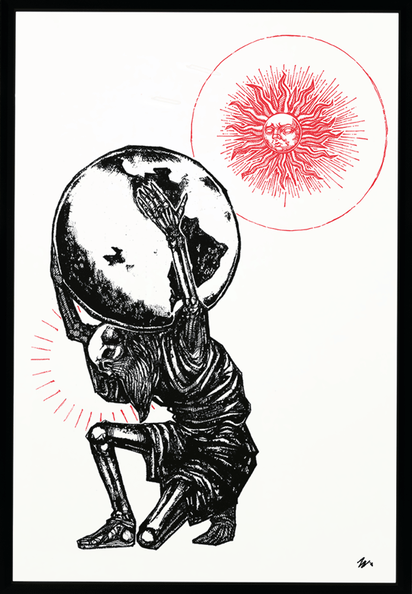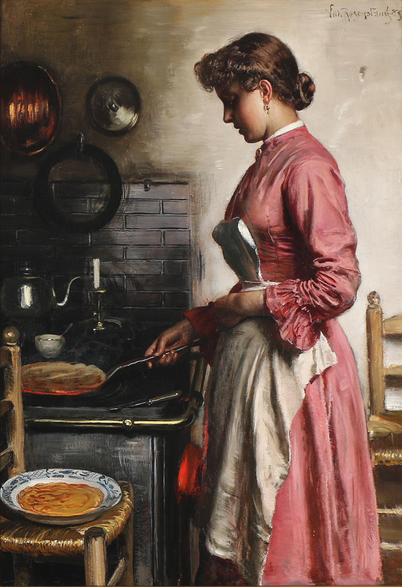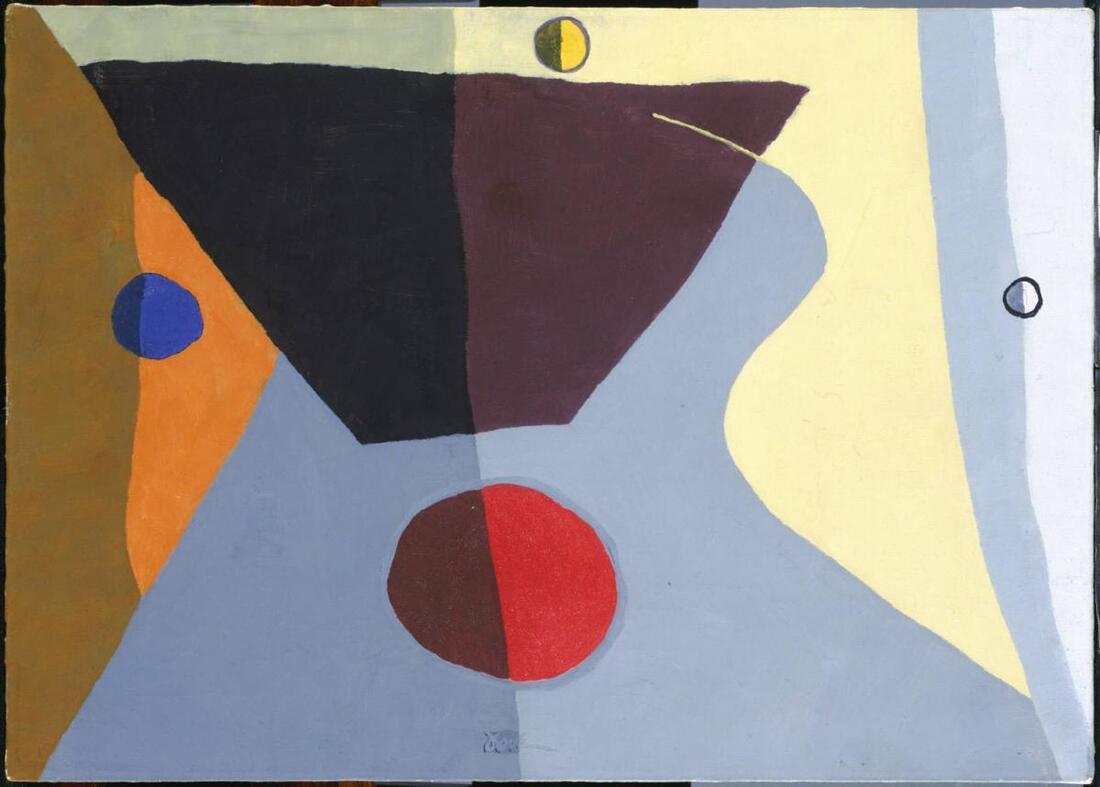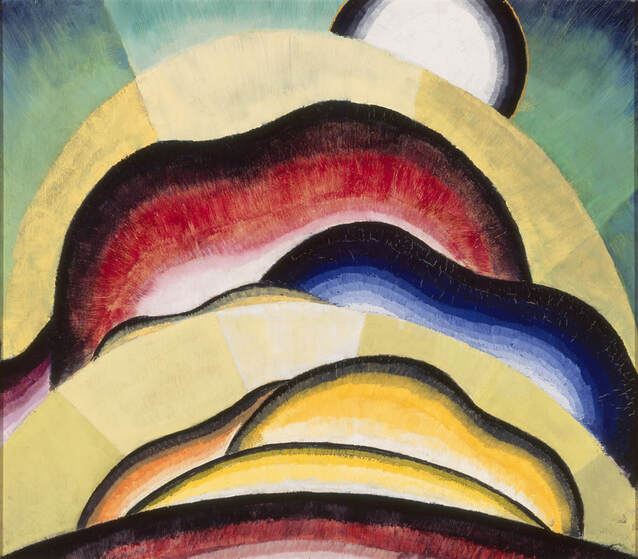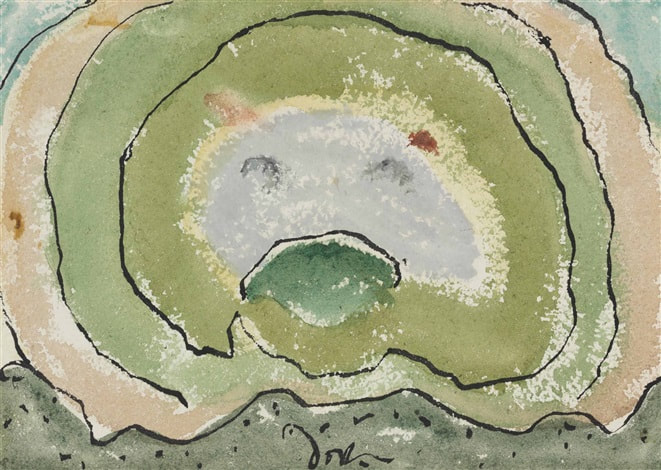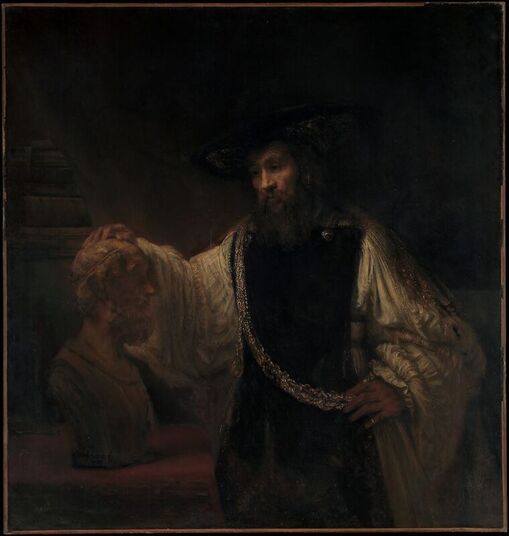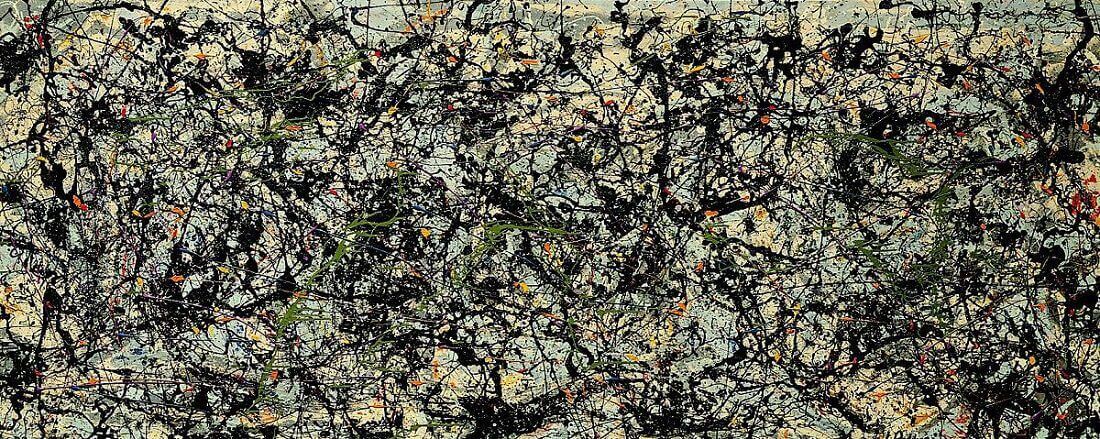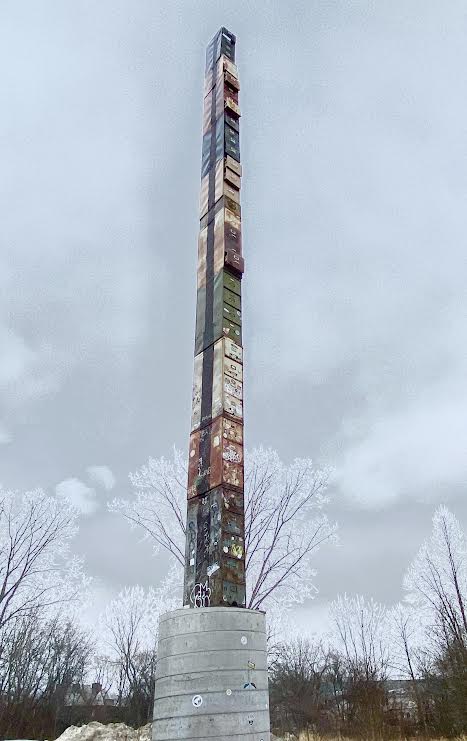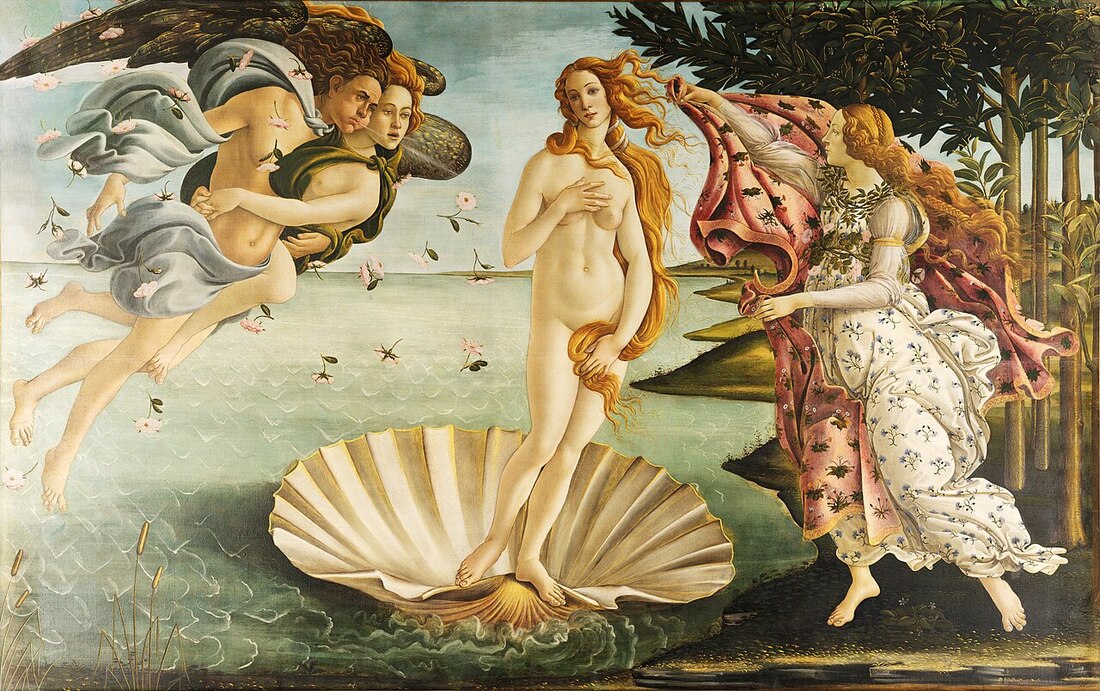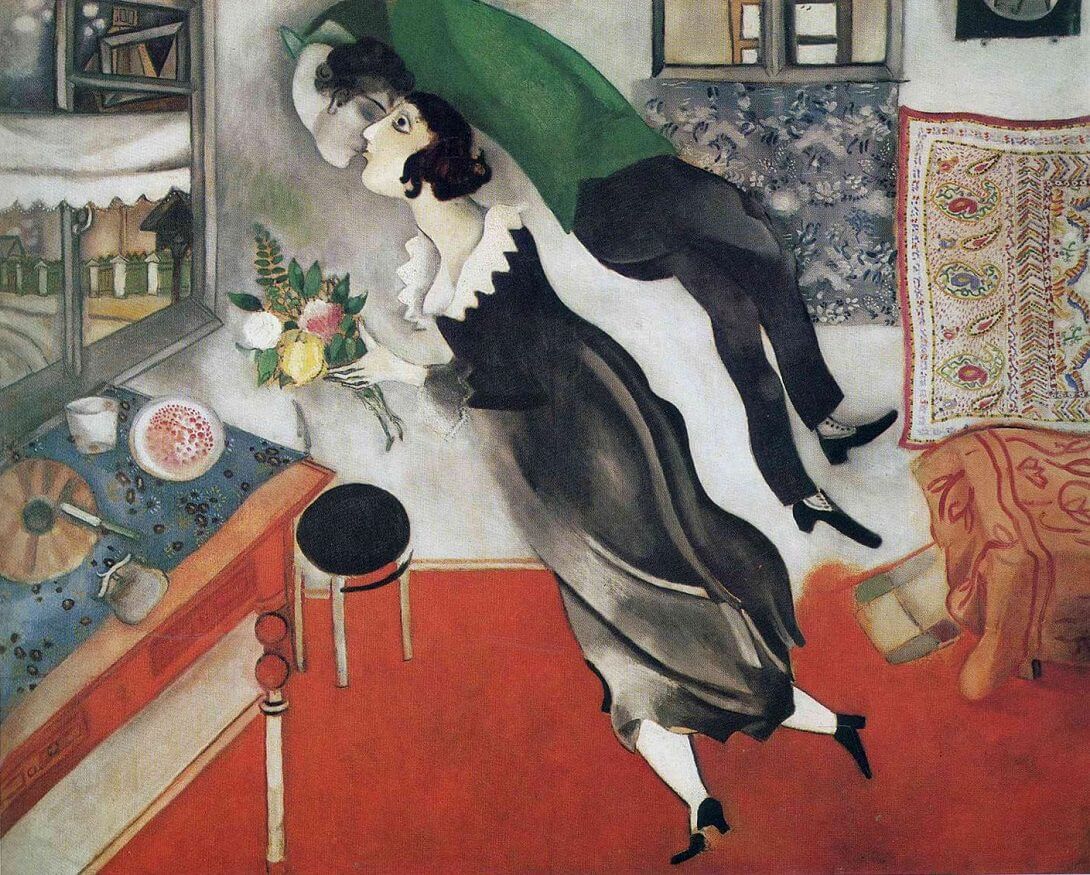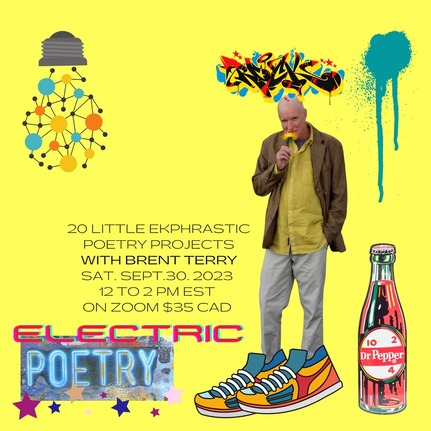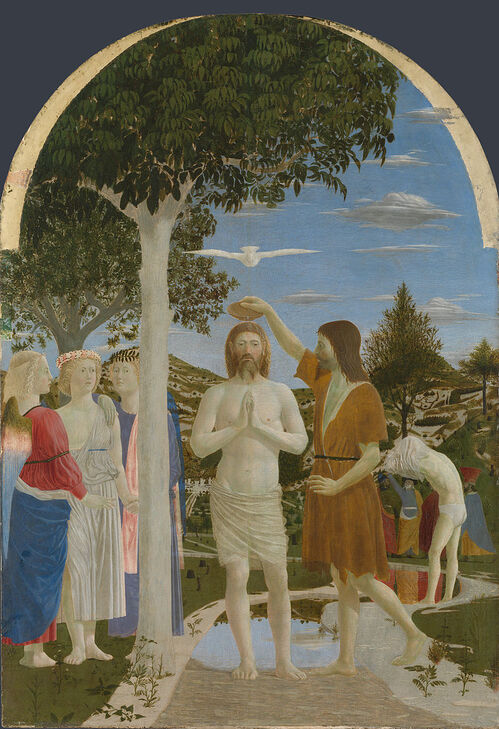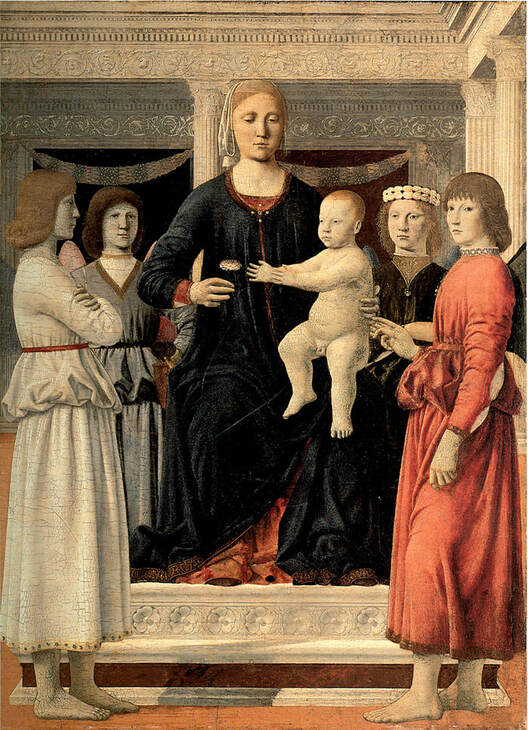|
Light/World stretched days kneeling under worldweight – summer light -ens the load bearing bones until dawn D.W. Baker D.W. Baker is a poet and teacher from St. Petersburg, Florida who writes about place, bodies, belonging, and the end of the world. His work appears in Feral Poetry, Snowflake Magazine, Soft Star Magazine, Modern Haiku, and elsewhere. He is a poetry reader for Hearth & Coffin. See more of his work at linktr.ee/dwbaker, or find him on twitter: @lowermelody
0 Comments
Ruby and Lily Oh, sweet Lily. Momma named us after beautiful things. Momma even had a diamond ring, too. Lily wants that ring, but I say it’s mine. Yesterday I hid it in the china closet. Nobody else around here got a china closet. Or a house as fine. I was with her when she found it, close by just like a draft from a window. She even shivered. That time she found it by the sink I let her keep it a few days. And wasn’t she charming, holding her hand up to see it shimmer, smoothing the wallpaper, singing I see you pretty flowers, I see you pretty birds . . . I sang too, but she thought it was the train rushing by, other side of Saunders’s field. Next time I’ll put that ring under the sofa. She likes finding it there, down on all fours yelping like sweet old Brandy used to. Daddy got that ring off a lady’s hand he almost tread on over in Berlin. Somthin’ soft under my boot, he’d say, so’s I look down and it was just winkin’ up at me. So now it’s your Momma’s and you girls just gonna have to fight over it when we’re gone. Kalliopy Paleos This story was written to The Pause, by Nicolas Martin (Canada) 2016. Click here to view. Kalliopy Paleos is a teacher of French with roots in Greece, France, and the US. Her poems and micros have recently been seen in the Tupelo Press 30/30 challenge, The Ekphrastic Review and Mediterranean Poetry. Interests include 18th century history and staring at trees while thinking. R 25-A Arthur Dove, 1942 Call it a boundary, better yet, an edge call it the line where difference dovetails then meets and melds and morphs, the space where one becomes another. Call it a road, a route, a means of moving the transposition from one place to the next the flow from east to west, west to east the ceaseless action along the glacial line. Watch the glacier stop then soften then recede while melting. See how the harbor hill moraine traces a trail across the fish-shaped island charting the verge where the shape of who I am at home touches the shape of who I am at work. A mother’s motion to a daughter’s being both alone and wed, both native and exile. The line dividing the circle that I am into shades of rose and hues of indigo. A road, a route, a means of moving commuting and communing while trapezoids traps circles sliced by triangles of red light green light yellow light blue light all light, then wax emulsion, the roots of milk inside, spreading waxy milk, milky wax, making and remaking. Dove, your cottage, just north, yet close enough to hear and see and smell the burning gas. We say a good day is a day spent north of 25-A. This means we don’t venture too far from our shore. This means we remain in walking distance. This means we stay close to home. Sunrise Arthur Dove, 1924 Reds always said he was a morning person, that he was most alive in the rising sun… – Mary Torr Rehm Some friend said you had a halo round your head. Maybe that’s what happens when you worship sun and moon, when you spend each day on the sea, seeing things twice, real and reflection, both become actual, unquestionable, worthy of paint and line and glaze and perception. For all his gabbing, when Emerson said nature was the body of God, I think he was on to something. Art is the pew where we kneel day and pray, poetry the incense we burn to clap our senses awake. Halo a word used by the ancients, the discs of light surrounding both sun and moon, and it seems, you too-- look at all the circle work, ascending orbs, prism palette—I hear a lark, an ode, a morning song. Happy Clam Shell Arthur Dove, 1938 These are Asharoken colours: tans, browns, a hint of pink, seaweed crisped by a sun bake. All that quartz and feldspar pounded to inconsistent sizes, deposited and delivered here. The sand holds the sun. It does. And that’s why things all over this earth look like concentric circles and radiate light. A happy clam. A human head. Eyes and a smile. Dove, this is your element, a clam like a loaf of bread. The salt of the earth swigging slime, breathing beauteous brine. Jesse Curran Jesse Curran is a poet, essayist, scholar, and teacher who lives in Northport, NY. Her essays and poems have appeared in a number of literary journals including After the Art, About Place, Allium, and Still Point Arts Quarterly. She teaches in the English Department at SUNY Old Westbury. www.jesseleecurran.com Aristotle with a Bust of Homer The Rembrandt on my Greek textbook Reminds me why I learn the case. Anachronistic image of The Aristotle must be me. A shadow of obscurity Enveloped shoulders of him here. It has laid him upon burden Which he bears with the pride and airs. The light falls on the point of touch Between his hand and Homer's bust. The gestur's patronising, but A section of light on his skull. The points of light, they tied in each. In gold of Modern Time, he's forced Above. The gesture is an act. His hand is solemn forgery. The gaze is filled with meekness and Compassion. I feel like Burne-Jones: Abandoned in prim and decent. Arailym Kairolda Arailym Kairolda is a young author from Kazakhstan focusing on lyrical essays and short stories. Her academic profile centres around studies in classical philology and English literature. Lucifer after Jackson Pollock fall/ bodyfreeze in midair/ the universewhipped face/ atomized/ loops through black/ a whirring star breaks/ starbreak/ starloop/ starexplode/ look how he pulses/ desire and sin interfuse/ falls to an abyss within/ the moth to flame/ his drunken dance/ cracks the floor of heaven/ chaos/ angelic light/ fragmented through a prism/ starchild/ but o how fallen/ how changed/ star of the morning/ bound midair/ hellfire/ darkness to throttle/ the flicker of a vision/ eden unfallen/ its leafwrapped comfort/ then zoom left/ bloodfruit/ bloodrush/ the tasting and the falling/ blood of the father/ bloodpoisoned venom/ leaf turned to scale/ star of our mourning/ snakeskin deceiver/ chaos in a canvas/ reveal thyself/ the painted descent/ no kingdom come/ temptation ungraspable/ universewhipped/ angelface/ the falling and the burning/ amen Camellia Choudhuri Camellia Choudhuri (she/her) is a poet based in Kolkata, India. She writes for both print and performance and has earlier been published by The Full House Literary, Quail Bell Magazine, Pnyx, and Queerlings UK. She loves singing with her choir, and spends a lot of time imagining what blackholes look like. Cursive Monuments are built for fear our small lives won’t be remembered. Trajan’s, Nelson’s, Washington’s– all with history expunged by rain. Then there is the tallest file cabinet. Rusty, 40 feet high, with 38 drawers that held 150,000 pages, just 304 Mb my iPhone could inhale for a snack. This one is different– so paltry, yet it towers like the stanzas of an ode. The in memoriam is what is not here: fully articulated fingers opposed by the thumb which, in concert, assign our X. The Palmer Method taught us rote ovals & sawgrass & right-formed letters ending up ours. I’m amazed at clear smooth streams of styled words grandparents left as family history– script flourishes of T’s and F’s and S’s illuminating a person behind the pen. I am speaking in Times New Roman. Their inky letters infused life like blood. My signature scrawls– anxiously ad lib. Philip H. Coleman This poem and image appeared in the April PoemCity in Montpelier, VT. In celebration of Poetry Month, 300+ poems are displayed in all the stores and buildings downtown; this year the library that sponsors the event also printed PoemCity: 2023 Anthology in which the poem appears. Philip H. Coleman has arrived here the long way around– from fine arts Yale, to decades convincing Vermont high schoolers of the symmetric beauty of chemistry, to the molecular science of poetry. He has been seen in Eunoia Review, Trouvaille Review, Quail Bell Magazine, The Ekphrastic Review, et al. Tableau Vivant In the shower, I pose as Boticelli’s Birth of Venus: 1. Weight on the left foot, point the right, dancer-like. 2. Place right hand over left breast, let left hand be the fig leaf -- and 3. Venus glides to shore on a giant scallop shell propelled by West Wind. In the masterpiece, she arrives all alabaster, head tilted, copper tresses rippling like fur, gold-flecked eyes seemingly benign, Goddess in human skin, or painter’s inner woman, or an aging-woman- under-waterfall’s illusion. She glows. I try. Compared to her centuries, I’m the babe in this sea. In Greek, she’s Aphrodite, thousands of years old. She’s the truly ancient one. Q: But how was Venus born? A: She rose from sea foam where Uranus’ testicles (!) were tossed by Cronos, the Titan of Time — a slight wobble on my axis — time’s dangerous, but I’m careful not to slip. Boticelli’s dawn sky’s pastel; roses dive and soar like gulls. Instead, draped around me, I imagine an incandescent, twilit heaven, for a few moments more, and then it’s time to turn off the water. Lora Berg Lora Berg has published a collaborative poetry book with visual artist Canute Caliste, and poems in Shenandoah, Colorado Review, The Carolina Quarterly, etc. She served as a Poet-in-Residence at the Saint Albans School and holds an MFA from Johns Hopkins. Lora served as a U.S. Cultural Attaché at U.S. Embassies abroad and has lived in several countries. Lora is a 2022-23 participant in the Poetry Collective based at Lighthouse Writers Workshop in Denver. She is a proud mom and grandma. After studying Chagall’s painting The Birthday, the Overachiever decides to write a stinking love poem to best Chagall and the clichéd new love painted bold black forest green blinding beige and red orange the hues so bright the sun pales his weightless body accents how he’s the first to discover the feel of love eating the heart from the inside insatiable breath every move colored by the texture of a lace collar shoes with no tread marks passion like a small animal clawing smitten he floats disembodied and grotesque his neck swiveled 270 degrees like a Tawny owl touching beak to lips his love’s fish-eye opens wide projecting the hemisphere of love on the bourgeoisie rug hung on the wall to keep cold away from the bed he hoots about the birthday flowers and raspberries picked in the morning clouds to crown the curd cake they're too busy to eat hunger for food irrelevant and disgusting the overachiever smears their canvas with better metaphors for a passion almost two decades old love that grew heavy to meet the earth and roll in understanding and obligations frenzied movement and surprise morphed into habitual consideration the business of established eros gradations of black and white the value of seeing a kaleidoscope with mostly rose quartz crystals the kind of love that can tromp in a field full of ticks and pull them off one by one waiting for the winter freeze Sandra L. Faulkner Faulkner researches, teaches, and writes about close relationships in NW Ohio where she knits, runs, and writes poetry about her feminist middle-aged rage. Her poetry appears in places like Writer’s Resist, Literary Mama, Ithaca Lit, and Gulf Stream. She lives with her partner, their warrior girl, and three rescue mutts. https://www.sandrafaulkner.online/ Join us next weekend on Zoom with special guest Brent Terry! Brent Terry is a longtime friend of The Ekphrastic Review, and of the arts in general. His accolades are for poetry, a novel, and essays, but he is just as legendary as a creative writing and literature professor. Don't miss this very special chance to work and play with a brilliant, creative, and funny writer. This session will be at Brent's speed, which as a semi-elite runner with a wardrobe of neon shoes, is electric. There will be 20 tiny poetry exercises! (If you're a fiction writer or other kind of writer, of course you can modify your participation accordingly.) Come out and play and see what surprises you leave with in your notebook. $35 CAD or approximately $25 USD. Electric Poetry- with Brent Terry
CA$35.00
Brent Terry is a longtime friend of The Ekphrastic Review, and of the arts in general. His accolades are for poetry, a novel, and essays, but he is just as legendary as a creative writing and literature professor. Don't miss this very special chance to work and play with a brilliant, creative, and funny writer. This session will be at Brent's speed, which as a semi-elite runner with a wardrobe of neon shoes, is electric. There will be 20 tiny poetry exercises! (If you're a fiction writer or other kind of writer, of course you can modify your participation accordingly.) Come out and play and see what surprises you leave with in your notebook. $35 CAD or approximately $25 USD. Baptism of The Zonzotti Addendum “Beyond a first mover exists an augmenting of creation.” Dr. Tera Nadi, Notebook 3 My role in exposing the story of creation began pathetically enough with my weeping in front of Piero della Francesca’s The Baptism of Christ in London’s National Gallery. I had recently walked away from an unsatisfying career in finance and been released from a fallow 27-year marriage, leaving me job, friend, family, and dogless. The halcyon days before the great pandemic clashed with my defeated state. The Baptism took me back to my eighth-grade field trip to Manhattan’s Frick. The class stood in front of a sunbaked, white-fork-bearded St. John the Evangelist and I shouted, “Check out that heavy metal mother fucker!” Mrs. La Cotta refrained from ripping out my hair and yelled “Language, Mr. Rubin!” When the disinterested group drifted to the next old painting, the Saint of the Apocalypse winked to me, which I took to mean that they would get their just rewards when all goes up in flames. I nodded that that would be cool and then we would hang beneath that calm blue sky, wearing matching crimson mantles. My Piero della Francesca allegiance solidified decades later at the 2013 Frick gathering of the American Pieros, including the four Frick pieces, the Clark Museum’s Virgin and Child with Four Angels, the Washington National Gallery’s St. Apollonia, patron saint of dentistry, and a technicolour icon-cloaked St. Augustine flown in from Lisbon. Most of the pieces had once been part of a complex wooden altarpiece in Sant’Agostino Church in Sansepolcro that had been dismantled and sold off, and the Frick curators had re-gathered the ancient parts as from tar-pit bones. Once again, I was in the presence of St. John, now with his colleagues, and a more seasoned me noticed that they appeared disjointed, mourning their missing and lacking context, like assorted New World Chiefs dog-and-pony-showed through the courts of Europe or made to visit the White House to be gazed upon by Jefferson. The show heightened the disorientation around an artist from the 15th century but who was not of it, and even more anomalous in the 21st. Of no school or clique, and according to the Frick’s program, Piero went unmarried, often traveling for commissions. Based on how my work and travel ruined intimacy, I assumed he had few friends and mostly transactional connections. Maybe he was lensing a world of existential isolation through painstaking perspective, carefully placing and connecting human forms on a two-dimensional surface -- that could be controlled. The magical solutions revealed ineffable meditations. One was reminded of the Zen motorcyclist who knew how the bike and all its parts functioned yet was welcome behind the curtain to emptiness. Here in London, older and more beaten, optically tricked to genuflect for my baptism, I awaited Piero’s John the Baptist to finish with the Savior so he could thumb a cross and douse my head. Across Gallery 14, from an Adoration, accompanied by Respighi’s Trittico Botticelliano along with a chorus of my sobbing, appeared an angel drawn to my trembling. Pulchritude incarnate was experiencing me experiencing the Piero; me as art, a more attractive notion than I could have conceived. Driven by the exquisite potentialities, from metaphysical transcendent to coffee house intellectual to voluptuous gutter coupling, my concentration telescoped towards concrete next steps. The angel approached and wiped my tears with a hsbd-iryt silk scarf, revealing she was flesh and blood with eyes matching the scarf and a silver-coloured, banged and bobbed hairdo fixed well above her chiseled sleeveless shoulders. I straightened, puffed out my chest, gently flexed a bicep, hoping the flaming hilt of my Manjushri wisdom sword tattoo became visible, and mansplained the glory of the painting: “The holy cousins stand on dry ground as despite the power of this ritual need no purification. Just look at that larger-than-life dove of the Holy Spirit! The master painted the figures to perfect the forms, only clothing them after.” This last note brought nudity into dialogue, a brilliantly subtle, low-risk gambit. Had I crossed an ocean of despair to the banks of the ecstatic, an elation of reward far greater than Poussin’s St. Paul7 carried upward by angels? I found myself back at my hotel with the Angel on top of me while I lay on the bed, smiling like the helmsman of a bloated ship of fools, a totally disoriented imbecile. She was seemingly having a third frustrated go at me. When I finished my business, she yelled, “Februa for Calpurnia!” and slapped my flushed cheek so hard my head snapped into the backboard. When I came to, she was bathed and dressed, mumbling with mild amusement “No awareness of the mathematics of Delft thrust angles or Germain’s 'Recherches sur la theorie des surface elastiques'”? She pulled from a wool-woven satchel a medieval looking volume with “Z30-33” gold-leafed on the spine and three notebooks labeled Tera Nadi 1, 2 and 3. “You have modest relevant writing talent, adore the master, and no one will miss you if you disappear for a time.” “Disappear?” “You will publish a short literary tale of our encounter that you will claim came to you in a dream.” “A short literary tale?” “The short tale must be published in a journal with greater than 2500 readers to place it sufficiently on record. You will then stay hidden long enough to draft what is in these notebooks – details on the forces behind the Quattrocento -- into a complete work which you will hand-deliver with the notebooks and the last remaining copy of The Zonzotti Addendum, to Stefano Campagnola, the Maestro at the Biblioteca Nazionale Centrale di Roma, and copies to James Peltz, the Editor in Chief at SUNY Press. You will then be free to resume your life as you see fit.” David M. Rubin Paintings cited above:
David M. Rubin has a Ph.D. in biology. His recent stories, poems, and essays appear in Café Irreal, City Key, Corvus, ffraid, Ginosko Literary Journal, Last Stanza Poetry Journal (2022 Pushcart Nomination for "Traumerei"), Maudlin House, The Nabokovian, The Smart Set, and others. He hopes to create connection @Six18sFoundry and @six18sfoundry.bsky.social |
The Ekphrastic Review
COOKIES/PRIVACY
This site uses cookies to deliver your best navigation experience this time and next. Continuing here means you consent to cookies. Thank you. Join us on Facebook:
July 2024
|
